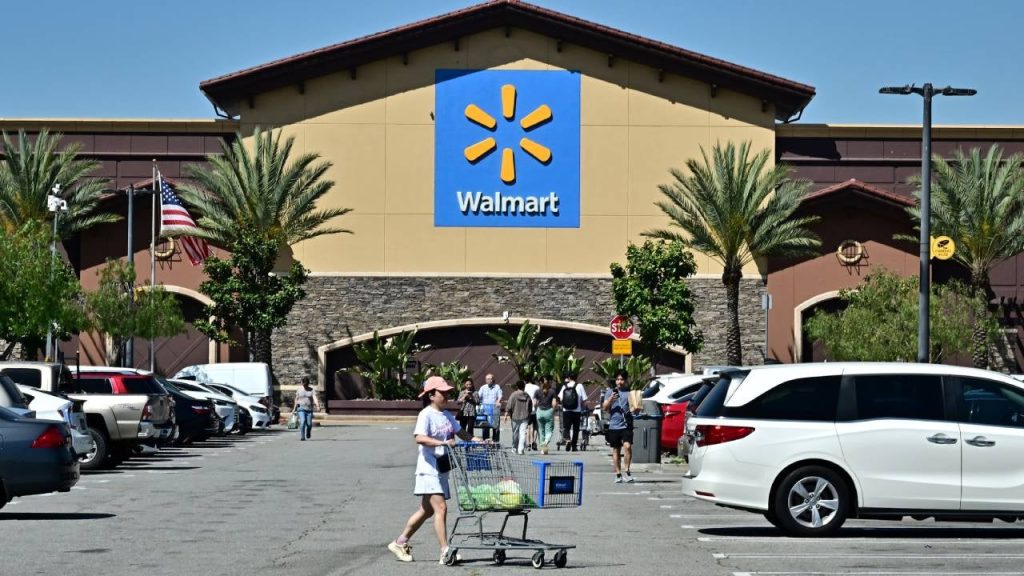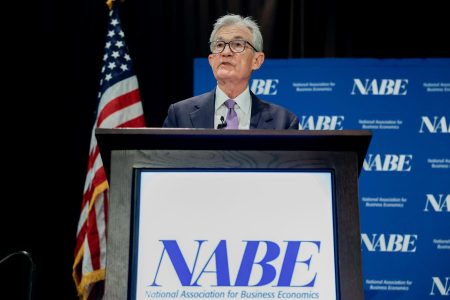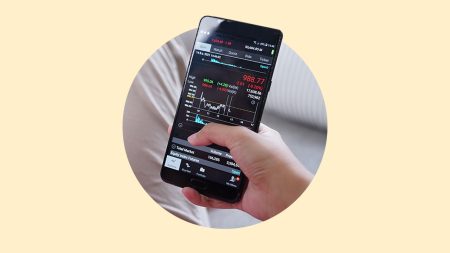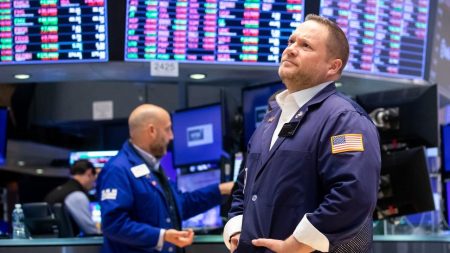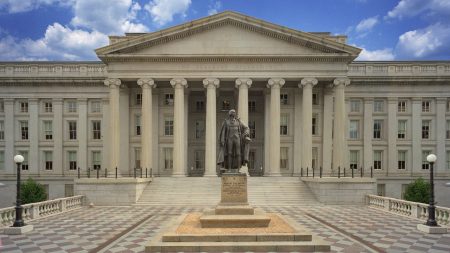FREDERIC J. BROWN/Getty Images
Walmart (WMT) reported solid earnings Thursday, but even one of the world’s most affordable retailers plans to raise its prices later this month, with consumers seeing additional price increases in June due to tariffs.
“We will do our best to keep our prices as low as possible, but given the magnitude of the tariffs, even at the reduced levels announced this week, we aren’t able to absorb all the pressure given the reality of narrow retail margins,” CEO Doug McMillon said on the earnings call.
The company reported $0.56 in diluted earnings per share for the first quarter, down from $0.63 in the first quarter of 2024 but ahead of Wall Street’s expectations. First quarter revenue was $165.6 billion, up 2.5 percent year over year with about a 1 percentage point attributed to lapping leap day. Same-store sales (sometimes called comparable store sales or “comps”) rose 4.5 percent from the year-ago quarter. Walmart stock was down 0.5 percent by the close Thursday.
Walmart warns of incoming higher prices
Despite some strong growth, Walmart is staring down a tough equation amid tariff pressures. That is, how to keep prices low for consumers when costs are high.
Under a new 90-day trade deal announced earlier this week, the U.S. said it will lower its tariff on Chinese imports from 145 percent to 30 percent. For context, less than a third of Walmart’s goods sold in the U.S. are imported, largely from China, Mexico, Canada, Vietnam and India, said John David Rainey, chief financial officer, on the earnings call. This is a good thing, but tariffs are still costly.
“We’re wired for everyday low prices, but the magnitude of these increases is more than any retailer can absorb,” Rainey told CNBC in an interview. “It’s more than any supplier can absorb. And so I’m concerned that consumer is going to start seeing higher prices. You’ll begin to see that, likely towards the tail end of this month, and then certainly much more in June.”
The retailer’s pricing method (or inventory method) assumes stable cost-to-price ratios. This matters for investors because when costs rise, retailers can’t always pass these increases to price-sensitive customers, causing profit margins to shrink, or vanish completely. Think of it like this: Walmart is cooking a recipe where a few ingredients have suddenly become much more expensive, but they can’t charge more for the final plate of food. This eventually erodes earnings.
TD Cowen analysts, who rate Walmart stock a buy, said in a research note that retailers who take this approach, such as Walmart, may not see tariff impacts — or true margin pressure — until later on.
In talking to investors, Walmart’s leadership reiterated its commitment to trying to keep grocery prices low, though.
“We want to keep our food and consumables prices as low as we can,” McMillon said in the earnings call. “Food prices in the U.S. have gone up in recent years and our customers have been feeling that all along. We won’t let tariff-related cost pressure on some general merchandise items put pressure on food prices.”
However, there may be price pressures for specific items from Colombia, Costa Rica and Peru such as bananas, avocados, coffee and roses, McMillon said.
“We will do our best to control what we can control in order to keep food prices as low as possible,” McMillon said. “An example would be controlling the amount of fresh food waste.”
The company issued second-quarter guidance with net sales expected to increase 3.5 percent to 4.5 percent, but maintained its full-year guidance of net sales to increase between 3 percent and 4 percent from last year, and for adjusted earnings per share to range from $2.50 to $2.60.
Other analysts were mostly bullish on Walmart’s earnings report, with Bank of America Securities rating the stock a buy and J.P. Morgan rated the stock overweight.
Editorial Disclaimer: All investors are advised to conduct their own independent research into investment strategies before making an investment decision. In addition, investors are advised that past investment product performance is no guarantee of future price appreciation.
Read the full article here



